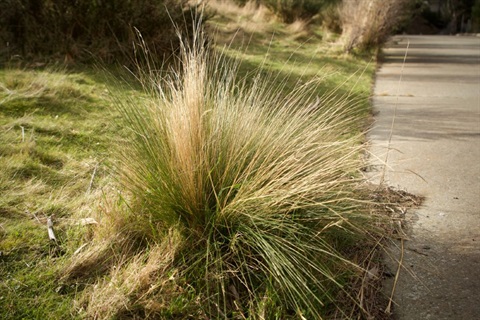Serrated tussock

Serrated tussock is often thought of as an agricultural weed. In Tasmania it is certainly the bane of many farmers. It's also a threat to Hobart properties and bushland reserves. This is due to its ability to colonise a wide range of habitats, dominate landscapes and disrupt ecosystems.
Serrated tussock (Nassella trichotoma) forms dense stands. These lead to increased fire risk and reduced land value. Identifying and managing this invasive grass is essential to safeguarding Hobart's natural and economic resources.
Small occurrences have been recorded in West Hobart, South Hobart, Mount Stuart and Lenah Valley. Most occurrences have been found in areas of new construction where earth moving equipment has been used. This suggests the seed arrived on machinery and equipment.
This highly invasive grass is hard to identify and often mistaken as native Poa. But telltale signs help distinguish it from native grasses:
- A purple feathery appearance when flowering in spring.
- In summer, the feathery seed heads turn golden brown as they mature.
- Tussocks often remain green over summer while other species brown off.
- Leaf blades are tightly rolled and feel cylindrical when rolled between the fingers, while other similar species have flat edges.
- If leaves are dragged between the fingers from tip to base, fine serrations can be felt.
We don't want to see this farmers' scourge get a foothold in Hobart. Please report this weed if you think you have it on your property or see it in your neighbourhood.
You can find more information about serrated tussock on the Department of Natural Resources and Environment website.
You can help control the spread of serrated tussock by:
- ensuring earth moving and mowing equipment is cleaned prior to entering your property
- reporting occurrences of serrated tussock.